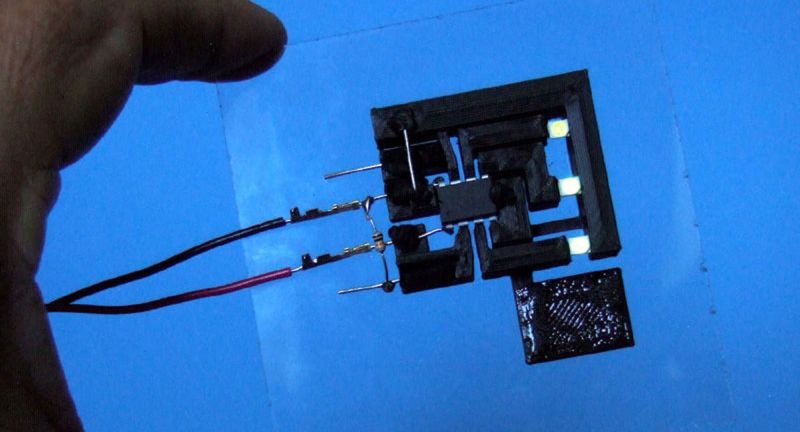One of the problems encountered thus far with 3D-printing circuits with conductive filament is that it doesn’t really bond to anything, let alone solder, so how does one use it?
[mikey77] wrote an Instructable showing how to print circuit boards and create simple circuits, using shape of the plastic as a way to control the circuit. We like how he used using the flexible nature of the filament to make buttons, with two layers of conductive material coming together with the press of a finger.
He also created a linear potentiometer with a 3D-printed wiper that increases the ohms of the connection the farther it’s pushed. The filament doesn’t have the same conductivity as copper so [mikey] was able make resistors by stringing pieces of conductive plastic between two leads. There are also some hexagonal touch pads that turned out very nice.
We’ve published a lot of posts about DIY circuitry, including a previous effort of [mikey]’s, 3D-printed solderless circuits, plus another post about printing point-to-point circuits on a 3D printer.
















how about a 3d printed camera focus jig
/sarcasm
“Increases the ohms”
How to sound like you have no idea what you’re talking about 101
Have to say I thought the same thing…
Glad I’m not the only one! Had an argument with someone elsewhere who was arguing that it was a figure of speech… Last time I checked, figures of speech that use the wrong terminology have no place in technical writing!
Yeah, that should have been “increases the Ohm-age”
No professional would say that either. Simply “increase resistance”. Same as you don’t say increase Henrys or farads.
It’d be faster and better to lay a bead of solder on perfboard and then seal around it with hot glue or potting compound.
Resistivity of the printed filament is apparently about 6 Ω·in, or 15Ω·cm…
That doesnt make sense.
6ohms/cm or 15ohms/in sure does, though….
Resistivity is not resistance.
Read https://en.wikipedia.org/wiki/Electrical_resistivity_and_conductivity
(Take resistivity, divide by cross-sectional area, multiply by length to get resistance)
Resistance is useless. You will be assimilated, 3d printed, and recycled.